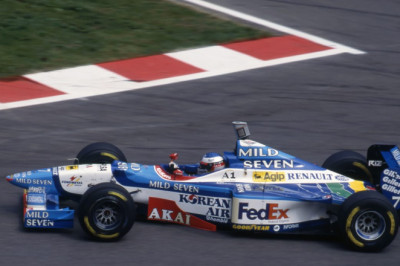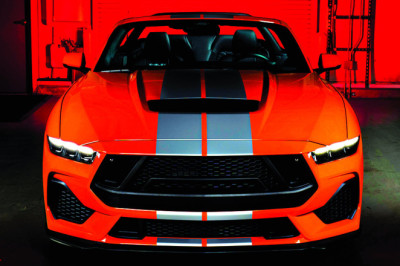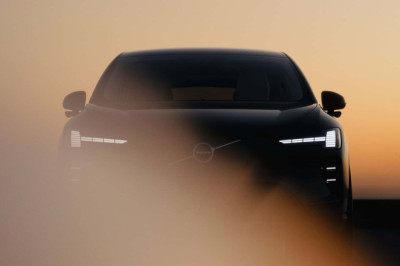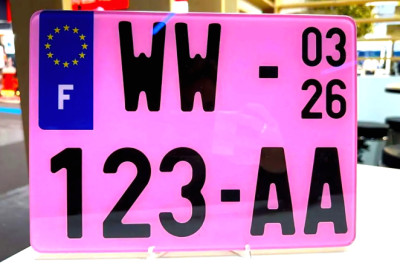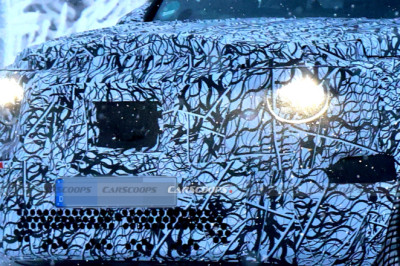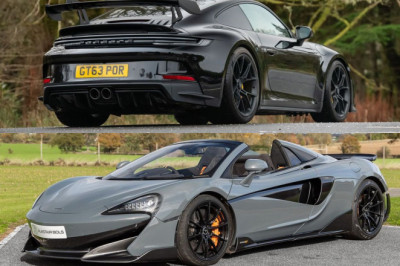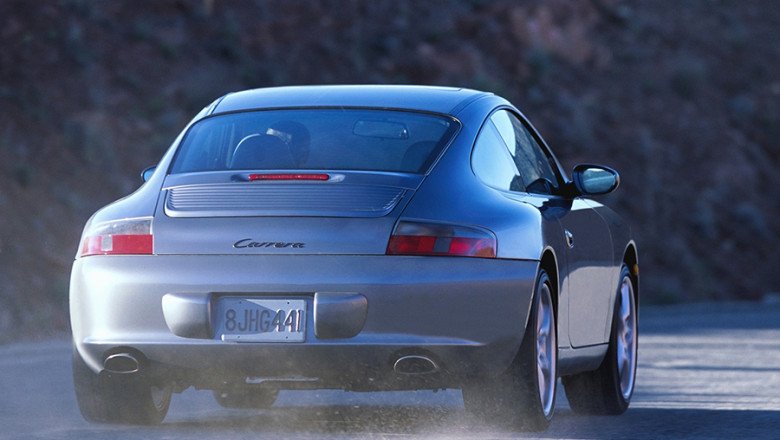
24th June 2023
Over the years, the Pikes Peak hill climb has given us some of the world's wildest modified cars. Here are some all-time classics.
by James Bowers
23rd June 2023
If you're making the effort to wrap your car, you'll want the final look to be worth the investment. So, here are the best car wrap brands.
by James Bowers
23rd June 2023
When changing the way your car rides and handles, you need to have parts that you can rely on. Here’s our best car suspension brands guide.
by James Bowers
23rd June 2023
From fast family cars to outright sports cars and covering all budgets, here’s our list of the best used cars to buy in 2023.
The used car market is so ridiculously massive, you’ve got to go into it with one or two filters in place or you risk being overwhelmed. What type of thing are you hoping to bring into your life? We’d imagine it’s something fast, agile, powerful, entertaining… but perhaps there are compromises too. Maybe you need extra space to carry the kids/pets/sporting equipment. Maybe you need something with sober aesthetics so you can at least pretend to your work colleagues that you’re being sensible.
Whatever the criteria, we think we’ve got something for you here. This list pulls together the top 10 of what we think are the best used cars to line up in your crosshairs right now; we’ve got some modern choices, some from back in the nineties, and a bunch of cars in-between. Each one represents a decent balance of desirability and value and – this being Fast Car – they’re all excellent to drive. So which one are you going to pick…?
We kick off our list of the best used cars buy with some we love at Fast Car, the E46 M3. It’s modern enough to be solid and dependable, yet old enough to provide an analogue driving experience. It’s a hell of a looker too. And this, for a lot of people, is the classic M formula – muscular straight-six up front, drive to the rear wheels, planted handling and plenty of power. When the E46 M3 launched in late-2000, its engine featured the highest specific output of any mainstream BMW motor to date, with 343bhp from its 3.2-litre six.
Now, the wealthy collectors are chasing after the Coupé Sport Leichtbau, or CSL, of 2004 – but as the prices of those limited-editions start to get silly, the ‘mainstream’ E46 M3s are starting to look like very decent value. Available as either two-door coupé or cabriolet, buyers had the option of a six-speed manual or SMG-II transmission to go with their hugely powerful S54. Standard kit included 18” M wheels, leather upholstery, xenon headlights (bi-xenons on post-2001 cars), sports seats, sports suspension, Dynamic Throttle Control, cruise control, titanium interior trim, Cornering Brake Control, ISOFIX points and a trip computer. It’s well-specced, practical and pleasingly comfortable, yet also able to lap the Nordschleife in 8:22, all available today for the price of a basic new hatchback. Now’s the time to grab one before the collectors realize!
Looking to buy one? Check out our BMW E46 M3 buyer’s guide packed full of advice.
The Honda S2000 is essentially an incredible engine with an elegant roadster wrapped around it. It’s a real screamer of a motor, a VTEC four-pot serving up 237bhp at a 8,300rpm, redlining at 9,200rpm, and featuring clever race-car tech such as forged pistons with ultra-low-friction skirts, and smart cam timing.
The legendary S2000 enjoyed a ten-year production run. Designed from scratch to be a sporting convertible, Honda developed a chassis that was light and stiff, and the cleverness of the engine continues inside with a nouveau-retro digital dash, allowing you to observe the rapid building of revs in a colorful streak. And the body design is a work of stylistic genius – it’s pretty, but not ostentatious, so unless you know what you’re looking at, it can sneakily fly under most people’s radar. It’s basically a race car underneath, and no-one suspects a thing.
There were two generations: the AP1, from 1999-2003, introduced that iconic layout of F20C engine, 6-speed manual gearbox and Torsen LSD; the AP2 was a minor facelift built from 2004-09, with a variety of significant alterations. The AP2 had revised suspension to reduce oversteer as well as bigger wheels; spring and shock rates changed and toe-in reduced along with a softer rear ARB. The steering ratio reduced, and the subframe was strengthened. A number of exterior changes signified the reworked model: oval tailpipes, redesigned bumpers, new headlights and LED taillights. But all S2000s are cool, we’d take any one of them.
Want more information? We’ve got a dedicated Honda S2000 buyer’s guide just for you.
The Mk4 Supra is a car that somehow hasn’t aged at all. It’s just gorgeous, isn’t it? The Dorian Gray of cars, it gets up to all kinds of hedonistic mischief and never gets a day older.
After an intense four years of development under the guidance of chief engineer Isao Tsuzuki, the Mk4 broke cover at the 1993 Chicago Motor Show, proving beyond all doubt how bullish the Japanese firms were about smothering the American market with their ballistic 2+2 supercoupés. Its sumptuous curves were unlike anything Toyota had marketed before, the design stunningly fluid and perfectly-judged. The hilariously tall rear spoiler was a statement of intent, while the figures of that hyperintelligent 2JZ motor really spoke for themselves.
As well as shoving a whole load more power into the Supra formula, the slinky Mk4 was actually shorter, lower and more svelte than the Mk3 it replaced, ably demonstrating that you can have more fun tinkering with the power-to-weight equation if you muck about with both figures. And while the car was, on paper, a sensible-ish four-seater boulevardier, its performance was enough to keep the supercars of the era on their toes. Period road tests demonstrated how the Porsche 911 Turbo 3.6 simply couldn’t keep up with it; the 2JZ straight-six was little short of magical, with 90% of its torque arriving at just 1,300rpm. The Mk4 was largely unbeatable. It had a better power-to-weight ratio than a Ferrari 348, and despite the gentlemen’s-agreement claim of 276bhp, the real figure for the twin-turbo manual Supra actually began with a three. Quite simply, the Mk4 is a legend.
If you’re looking to scratch the JDM itch, check out our Toyota Supra Mk4 buying and tuning guide full of advice.
The world’s best-selling sports car, the Mustang has been an integral part of the motoring landscape since its big reveal at the New York World’s Fair in 1964. Indeed, the story of the ’Stang is a pretty incredible one: still available as a new model today, it’s America’s best-selling sports car of the last fifty years, and in late 2018 the ten-millionth Mustang rolled off the production line at the Flat Rock Assembly Plant in Michigan. It’s undeniable that the Mustang is a fundamental part of the cultural bedrock of the USA.
The S197-generation Mustang was a very well-timed car, arriving to the market in 2005 just as the world was enjoying a widespread retro renaissance – the New Beetle, the Mini, it was all old-school-new-rules and the fresh new Mustang fit right in. The S197 range started with the 4.0-litre V6 models, and that’s the version we’re looking at here. Standard equipment levels were high, with every car coming equipped with power windows and mirrors, power steering, remote keyless entry and twin-piston brakes, while the options list – as with any generation of Mustang – allowed buyers to go wild with the personalization. It’s a model that responds equally well to a light touch or the full Shelby-style glitz; there’s an elegance to the V6 Mustangs that’s ageing extremely gracefully, and they make for stylish and practical daily-drivers.
Alright, we have just recommended that you buy an apple-pie muscle car that doesn’t have a V8 in the form of the six-banger Mustang. So let’s go totally the other way, and recommend one of the maddest production V8s ever built. It wouldn’t be a Fast Car best used car to buy list without some wild options.
Fast-forward from the Mustang in 2005 to 2018, we find ourselves deep within the modern muscle car renaissance, with Dodge’s line of increasingly deranged Challengers and Chargers paying noisy tribute to their iconic names. The Hellcat of 2015 was a landmark model when it launched, with its outrageous supercharged 6.2-litre Hemi producing an almighty 707bhp… and if you thought the Hellcat was scary, the Demon really knocked things up a notch.
The ultimate variant of the modern Challenger, the Demon was a essentially a road-legal drag-racer that you could buy from a dealership with a warranty. Its 6.2-litre Hemi had a 2.7-litre supercharger on top, giving it a peak power figure of 808bhp on pump fuel. It’s a fun fact that the development team genuinely did design it to be a production car that could pull wheelies, and the specs made for beguiling reading: 315-section Nitto tires (on the front!), only one seat – unless you paid a dollar to add the other seats back in, a line-lock, and a ‘Power Chiller’ that hijacked the air-con system to pre-chill the intercooler. Quite possibly the angriest car ever built – not cheap either, but will undoubtedly hold its value as a collectible.
The R53 Cooper S is a car that enjoys widespread perennial appeal, for good reason: it’s the classic hot hatch formula, a little point-and-squirt pocket rocket, and it’s got a supercharger. Why wouldn’t you want that?
As with so many cars approaching (or passing) their 20th birthday, the R53 is a car that you can very easily pick up for not a lot of money… but you probably shouldn’t. Yes, it is easily possible to find one for a couple of thousand, but buying one for closer to double that figure with a decent history will be less painful in the long run. And once you’ve found a good base, you’re free to go crazy with the mods. The R53s really loves modifications, they respond so well to upgrades.
These cars are an absolute blast on road and track even in standard form, and the thing we’d recommend first of all is to downsize the supercharger pulley. There are various percentage options but there’s no point mucking about – go for the full-on 17% pulley, combine it with an Airtec top-mount intercooler and some colder spark plugs, and your stock 170bhp will suddenly rise to around 200bhp. Plus the blower will be wailing like a banshee! It’s not cheap, but the next step for the serious track fan is to swap in a full Eibach chassis makeover – coilovers, top-mounts, anti-roll bars, the lot. It makes a world of difference, and turns a really good car into a great one. Hot hatch heaven, right there.
Be sure to check out our Mini Cooper S R53 buyer’s guide for advice on what to look our for when buying one.
The cult of the Porsche 911 has been peaking petrol heads’ attention of all ages for generations. And for good reason, too, hence its position in our list of the best used cars to buy. Let’s explain.
In the 2020s, the 1990s/2000s-era 996 has become a very much sought-after modern classic. It may have suffered a few brickbats when launched, thanks to the fact that it shared its front end (and its so-called ‘fried egg’ headlights) with the more affordable Boxster. And the evolution of the model that really irritated the purists at this stage was that its engine was water-cooled; this was the first 911 generation not to have an air-cooled flat-six, and that rather upset the applecart.
The 996 suffered further ignominy in later years when its name became synonymous with forum ‘experts’ banging on about the infamous IMS issue, whereby the engine’s intermediate main shaft could fail unexpectedly and lunch the engine. But by now it’s fair to say that the vast majority of cars will have had this sorted, leaving the 996 as an affordable and properly usable sports car – and this misplaced reputation is what’s keeping prices low. They really are fabulous cars too; beautifully engineered, built for fun, and very pretty.
Clever buyers will note that, while values of the Turbo, GT3, GT2 and RS models are becoming increasingly massive, the lower-echelon Carrera models are surprisingly inexpensive. The Carrera 4 has an excellent spec, with all-wheel-drive, clever differential braking, and a 300bhp 3.4-litre flat-six. You could use it every day, and it costs less than a new hatchback. Bit of a slam-dunk really, isn’t it?
The Crown Victoria Police Interceptor sold from 1992-2011. From ’97 onwards it was the most widely-used law enforcement vehicle in the US and Canada, so there’s quite a few of them out there. The body-on-frame construction made them attractive to police forces, as it makes collision repairs easier without necessarily having to straighten the chassis and, while never officially sold new to the public in cop trim, they make their way onto the second-hand market when the officers are done with them.
The Police Interceptor came with a beefed-up heavy-duty transmission, ‘severe duty’ shock absorbers, stainless steel exhaust and black steel wheels. And, of course, a brawny V8 and rear-wheel-drive. There are two key types of Crown Victoria Police Interceptor; first-gen and second-gen cars. The latter, built from 1998-2011, upped the Modular V8’s power to 250bhp, with the body updated to look more like the sort of generic three-box saloon a child would draw if you handed them a box of crayons and said ‘draw me a car’.
Stock Police Interceptors came with copious black trim (grille, bumper strips, rear fascia, unpainted door handles and so on) although individual forces could spec a ‘Street Appearance Package’ to reinstate some of the regular Crown Victoria’s chrome trim. Post-2003 cars had a minor revamp, with side-impact airbags, and redesigned suspension which gave the wheels a much higher offset. And 2003 was the last year that the Crown Victoria Police Interceptor came with a cassette head unit!
The success of the early TT speaks for itself – the showroom model was amazingly close to the design of the original concept car, and these little spaceships sold like hot cakes. The Mk1 TT shifted in massive numbers, which means that there’s plenty out there to choose from – and with an increasing rate of attrition, this is a modern classic that you can hold onto and watch the values rise, while still enjoying it every day.
There were quite a lot of spec variants; you could get a FWD setup with the lower-powered engines or the full-fat quattro system with the sportier ones. Engine-wise, you had a choice of either a 1.8T or a 3.2 VR6, although it wasn’t quite that simple – the 1.8T could be had with 150bhp, 180bhp, or the brawny 225bhp in the aptly-named TT 225.
The 3.2 came with a DSG box and improved aero, although many argue that its 247bhp figure isn’t enough of a gain over the lighter and more easily tunable 225-spec 1.8T. And it’s the 225 we’re championing here: as well as the quattro AWD system. You also got the BAM engine, which is essentially a 1.8T on steroids; it had uprated pistons and rods, increased fueling and larger intercoolers. You get all kinds of toys with the 225 too – look at the cars for sale to find one with the Bose audio option and the heated leather seats. If you’re really lucky, you might even find one with the brilliantly weird baseball leather option.
Check out our Audi TT Mk1 buyer’s guide for advice when buying one.
The Camaro has always been a strong presence in the muscle car scene, and the modern-era models are particularly brutal. Uncompromisingly huge with equally huge horsepower, these imposing coupes really are something special – and when the engineers came up with the ZL1 specification, all bets were off.
You see, there’s always been a bit of snippiness in certain quarters about the dynamic abilities of muscle cars – machines that were built to be devastating in a straight line, but fall to bits if you show them a moderate corner. But the ZL1 laughed in the face of all that. This was a muscle car that was built to handle. And as that’s never really been this type of car’s forte, Chevy threw a huge budget at it.
The ZL1 took the already-impressive Camaro SS and added Magnetic Ride suspension, wider wings to accommodate broader tires, improved front aero, and a carbon fiber bonnet insert to suck hot air out of the engine bay. And power? Ooh yes, there’s quite a lot of that. With 455bhp to play with, the ZL1 will run from 0-62mph in just 3.5-seconds, going on to a top speed of 198mph. and you could maybe top the double-ton if you keep the throttle pinned with a following wind.
It’s a wildcard option, but the hair-raising performance justifies its position on our list of the best used cars to buy. For something that costs under $100k, there won’t be many other cars that can deliver the same thrills for the same price. If for whatever reason you want something crazier, check out the Hennessey tuned ZL1 named The Exorcist…
And that concludes our list of the best used cars to buy in 2023. We’ll continue to update this article throughout the year to reflect market changes.
24th June 2023
Over the years, the Pikes Peak hill climb has given us some of the world's wildest modified cars. Here are some all-time classics.
by James Bowers
23rd June 2023
If you're making the effort to wrap your car, you'll want the final look to be worth the investment. So, here are the best car wrap brands.
by James Bowers
23rd June 2023
When changing the way your car rides and handles, you need to have parts that you can rely on. Here’s our best car suspension brands guide.
by James Bowers






